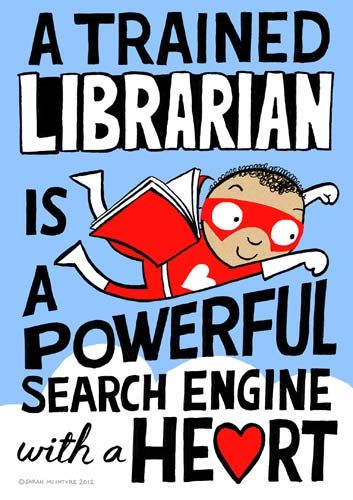As librarians, we aim to bring new ideas, assist you with getting the ball rolling and be a helping hand when things aren’t going as planned. Here are some ways we are able to help you in your classroom:
We are skilled in resource cultivation.
Have a question? We might not have an answer, but we are experts at knowing how to find one. If you tell us an idea or an area you want to explore, we can get started on researching from our end to find the best resources, gain ideas from others in our field and gather a plan of attack.
One example of this recently came up when a teacher asked me for resources because she was assigning a peer expert project. I gathered library materials, database information and citations instructions for her to share to her students. Putting our ideas together, she will execute a project that builds on what students have learned about research in previous years.
We never say, “That’s not in my job description.”
If I need an article, I want some ideas on how another school does something, or I just don’t know where to get started, I can pose a question on our school librarian listserv and I will get dozens of responses. These are not always related to libraries either. I posed a question about school recycling programs and they told me how they make it work in their buildings!
We also connect with librarians at conferences, we keep in touch with our mentors and role models, and we participate in idea exchanges through Twitter. The point is, librarians love to help and that includes each other, creating a huge network of support to which we are able to reach out when we need fresh ideas.
Sometimes all you need is another adult to facilitate, or someone to figure out why the heck your speakers don’t work. We can do that, too.
We fund access to a variety of educational resources for the district.
You probably know about Discovery Education and use it to show videos related to your content, but did you know the middle school has access to Britannica school edition? Or that the high school can use EBSCOHost? When it comes to asking students to do research, it will save you a lot of time and heartache if you ask us to prepare a list for you and give the students a “starting line” for their research. We would be happy to help with that.
We also buy books, of course. Let us know if you want books in the library on a certain topic and we can make that happen, too.
We are experts in educational technology integration.
There’s a teacher who often says to me, “I want this to be the product. Can we make that happen?” I love this because she’s using me as a resource and tapping into my interest in technology. We see a lot of great ideas, but we are also willing to investigate new ones.
Keeping up with technology feels like running a race where the finish line keeps moving. But we love it. It never ceases to amaze us what teachers will come up with and we are impressed with the ways in which teachers leverage technology to create meaningful learning opportunities that could not have existed before. Want to hear more? Ask us! There’s so much good out there.
We are knowledgeable about current trends in education.
Cooperative learning. Hybrid learning. Project-based learning. These are buzzwords. What matters is the student and their learning. We know that and we know that sometimes these buzzwords feel like a new spin on an old idea. Still, there are great educators out there doing great things (including lots of them right here at Warrior Run!), and we pay attention to what they are so we can share them with you.
The uniting theme behind all of these is collaboration. We’re really good at that. Just ask.




